Introduction
In a world where dogs are celebrated as man’s best friend, it’s tough to see our furry pals struggle with separation anxiety. As a new dog owner of a rescue pup, grasping and managing this condition is vital for both you and your four-legged buddy. You might picture the tail-wagging joy of welcoming a new dog into your home, only to witness the heart-wrenching scene of them howling and gnawing on your favorite shoes every time you leave.
But don’t worry! This guide is here to provide practical strategies, expert insights, and heartwarming anecdotes to help your rescue dog conquer separation anxiety. With a touch of humor and a sprinkle of curiosity, we’ll ensure you and your pup enjoy a smoother transition into your forever home.
Separation anxiety is more than just a behavioral hiccup; it’s a genuine emotional struggle. Many rescue dogs come with past traumas or experiences that can make them extra sensitive to being alone. The signs are often there—barking, destructive behavior, and even inappropriate elimination. You may ask yourself, “Is my dog simply bored or genuinely anxious?” Knowing the difference is crucial.
So, how can you help your rescue dog? The journey begins with understanding their unique needs and fears. Gradual desensitization, safe spaces, and consistent routines can all make a world of difference. And let’s not forget about the power of engaging toys and calming products! Consider the KONG Classic Dog Toy, which can be stuffed with treats to keep your pup busy while you’re away.
Throughout this guide, you’ll find practical tips and expert advice from seasoned dog trainers and veterinarians. We’ll cover everything from recognizing the signs of anxiety to long-term strategies for building confidence in your pup. So buckle up and get ready to turn panic into peace. Together, we’ll navigate the ins and outs of helping your beloved rescue dog thrive when left alone.
Let’s embark on this journey, one wagging tail at a time!
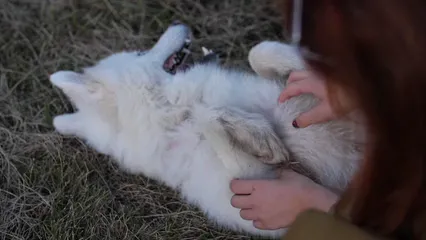
Understanding Separation Anxiety in Dogs
What Is Separation Anxiety?
Separation anxiety is a common issue in dogs, particularly rescue pups. It manifests as extreme distress when a dog is left alone. This distress can range from mild unease to full-blown panic attacks. Rescue dogs often face this challenge due to their previous experiences, which may include abandonment or neglect.
But what does this anxiety look like? Emotionally, anxious dogs may exhibit clinginess, excessive barking, and signs of agitation. Behaviorally, they might destroy household items, pace incessantly, or even eliminate indoors despite being house-trained. It’s important to recognize these symptoms to differentiate separation anxiety from other behavioral issues like boredom or disobedience.
The emotional toll on these furry friends is significant. They might feel abandoned and unsafe when left alone, leading to further anxiety and distress. Understanding that this is a genuine emotional struggle and not just a bad behavior can help you approach the situation with patience and empathy.

Causes of Separation Anxiety
Several factors contribute to separation anxiety in rescue dogs. One primary reason is previous trauma. Many rescue dogs have faced abandonment or neglect, causing them to develop a fear of being alone. When they arrive in a new home, they might feel insecure and uncertain about their surroundings.
Another crucial factor is a change in environment. Moving from a shelter to a new home can be overwhelming. The sudden shift can trigger anxiety as the dogs adapt to unfamiliar sights, sounds, and smells.
Lack of training also plays a role. Dogs that haven’t been properly socialized may struggle with being alone. If they haven’t learned to feel comfortable when separated from their owners, anxiety is likely to develop.
Additionally, attachment styles matter. Some dogs form strong bonds with their owners and may struggle to cope with separation due to their intense attachment. Individual differences among dogs further complicate matters; each dog has a unique temperament and personality that influences how they react to being alone.
Recognizing these underlying causes is vital. This knowledge can guide you in developing effective strategies to help your rescue dog feel more secure and less anxious when left alone. For extra support, consider the Zesty Paws Calming Chews for Dogs to help soothe their nerves.
Understanding the causes of separation anxiety is essential for developing effective strategies. Learn more about managing separation anxiety in puppies.
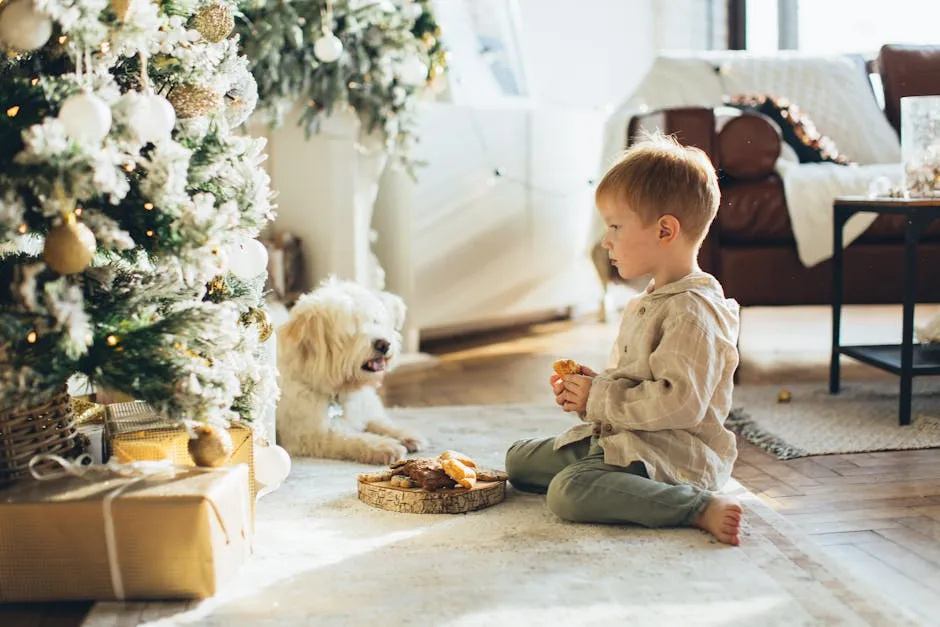
Identifying the Signs of Separation Anxiety
Common Behavioral Indicators
Identifying separation anxiety in your dog starts with recognizing specific behavioral signs. These indicators can vary from one dog to another, but some common behaviors include:
- Excessive barking or howling when left alone.
- Destructive chewing on furniture, shoes, or other items.
- Pacing back and forth, unable to settle.
- Inappropriate elimination, such as urinating or defecating indoors.
- Scratching at doors or windows, as if trying to escape.
It’s essential to differentiate between separation anxiety and other behavioral issues like boredom. For instance, if your dog is chewing on furniture only when you’re gone, that’s a red flag. But if they chew out of boredom when you’re home, it might be a different problem altogether.
Understanding these signs will help you determine whether your dog is facing separation anxiety. If you notice any of these behaviors consistently, it’s time to take proactive steps to address the issue.
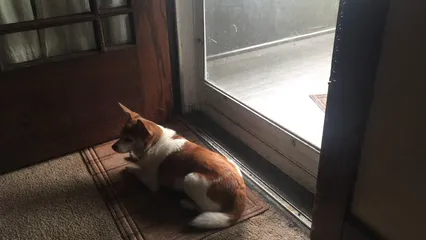
Observing Your Dog’s Behavior
Monitoring your dog’s behavior when left alone can provide valuable insights. Consider using video monitoring to capture their actions during your absence. This can help you identify patterns and triggers associated with their anxiety.
Pay attention to what happens when you prepare to leave. Do they start pacing or whining? Observing these behaviors can help you understand their emotional state. By documenting their reactions, you can gather important information to share with trainers or veterinarians if needed.
Understanding your dog’s behavior and emotional triggers is the first step toward helping them feel more secure when you’re not home. With patience and dedication, you can work together to reduce their anxiety and foster a happier, more relaxed environment.

Effective Strategies for Managing Separation Anxiety
Gradual Desensitization
To help your rescue dog adjust to being alone, consider gradual desensitization. It’s like teaching them to enjoy their own company, one paw step at a time. Start with very short departures. Leave your dog alone for just a few minutes. You can gradually increase this time as they become more comfortable.
Here’s a step-by-step plan:
- Begin with 5 minutes: Leave your dog in a safe space with a favorite toy.
- Reward calm behavior: When you return, praise them or give a treat.
- Increase time slowly: Once they handle 5 minutes well, try 10, then 15, and so on.
- Practice departures: Randomly pick up your keys or put on your shoes without leaving. This helps decondition any anxiety linked to these actions.
- Stay calm: Your demeanor matters. Keep your departures and arrivals low-key. A cheerful goodbye can signal excitement, which may lead to anxiety when they’re alone.
Your calmness will help reassure your pup that it’s okay to be alone for a while. Also, consider using a Thundershirt Anxiety Jacket for Dogs to help calm their nerves during these transitions.
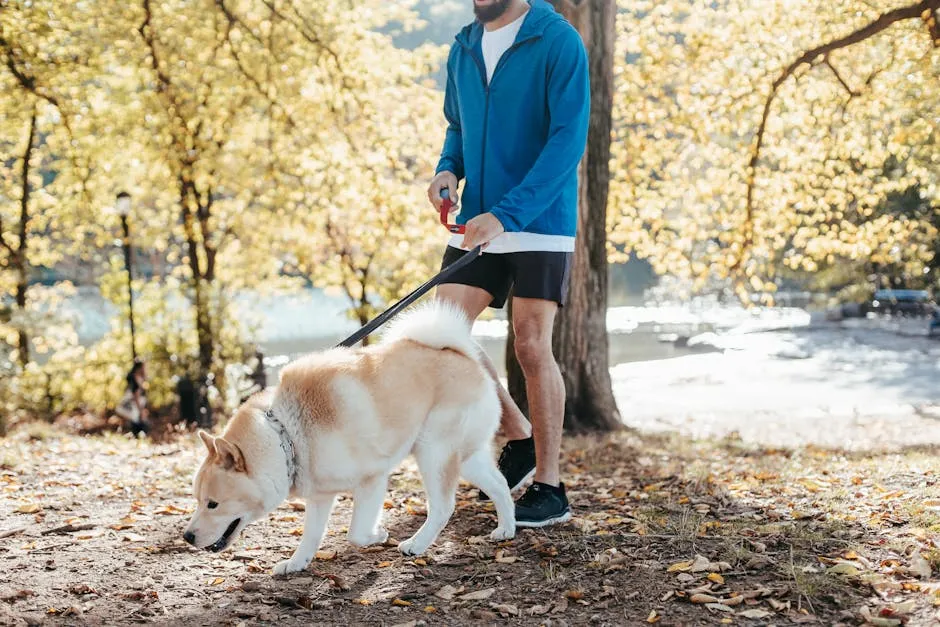
Creating a Safe Space
Next up, creating a safe space for your dog is crucial. This area should be cozy and inviting, making them feel secure. Consider a quiet room or a designated corner with their bed, blankets, and toys.
Here are some tips for that perfect setup:
- Comfort items: Include a blanket or a toy with your scent. Familiar smells can be soothing.
- Enrich the environment: Add a few interactive toys to keep them engaged. Puzzle toys that dispense treats can occupy their attention. Check out the PetSafe Busy Buddy Treat Dispensing Dog Toy for hours of fun.
- Safe zone: Make sure the space is free from hazards, like exposed wires or breakables.
This safe haven will help your dog relax when you’re away, reducing their anxiety levels significantly. For more information on creating a safe space, check out best practices for creating a safe space for pregnant dogs and puppies.
Creating a safe space is vital for reducing anxiety in dogs. Learn more about best practices for creating a safe space.

Establishing a Routine
Dogs thrive on routine, and establishing a consistent schedule can greatly alleviate anxiety. A predictable routine can give your pup a sense of security.
Consider these elements for a solid routine:
- Feeding times: Serve meals at the same time each day. This helps establish a rhythm.
- Walks: Regular walks can provide physical exercise and mental stimulation. Schedule them consistently.
- Departure cues: Use similar cues each time you leave, like a phrase or a specific action. This builds familiarity and reduces uncertainty.
By creating a routine, your dog will learn what to expect, helping them feel more secure and less anxious when left alone. And for those car rides, don’t forget to grab a Dog Seat Cover for Cars to keep things tidy!
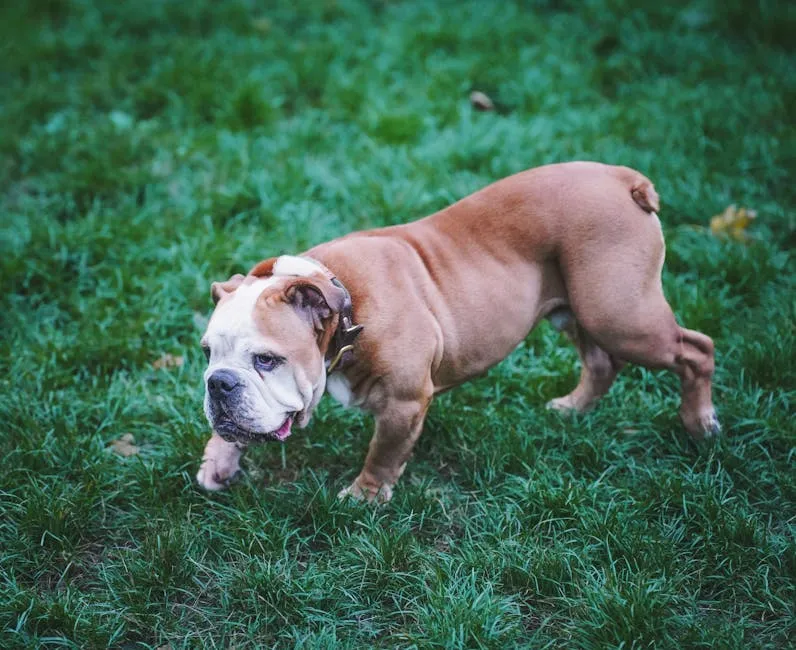
Engaging Toys and Calming Products
Interactive toys can be a game-changer for anxious dogs. They provide mental stimulation and distract your dog from feelings of loneliness.
Here are some engaging toy suggestions:
- Puzzle toys: Treat-dispensing puzzles can keep your dog entertained for hours.
- Chew toys: Durable options like Nylabone DuraChew Dog Toy can be stuffed with treats to keep them busy.
- Comfort items: Soft toys that mimic companionship can soothe your dog when they feel alone.
In addition to toys, calming products can be beneficial. Consider:
- Pheromone diffusers: These can mimic the comforting scent of a mother dog, reducing anxiety. Check out the Dog Anxiety Relief Pheromone Diffuser to help calm your pup.
- Anxiety wraps: Thundershirts apply gentle pressure, similar to a hug, which can help calm your pup.
- Natural supplements: Consult your vet for calming supplements that can promote relaxation without side effects.
These tools can make a world of difference in easing your dog’s anxiety.
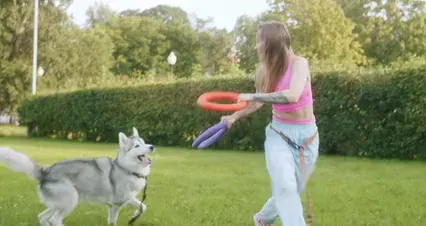
Seeking Professional Help
If your dog’s anxiety persists, it might be time to seek professional help. A veterinarian or a certified dog trainer can provide valuable guidance tailored to your dog’s needs.
When should you consider professional assistance?
- If your dog shows extreme anxiety symptoms despite your efforts.
- When destructive behaviors escalate to concerning levels.
- If home training techniques aren’t yielding results.
Professional trainers can offer personalized strategies, often using techniques like behavior modification or desensitization. They can help you navigate this journey while ensuring your dog receives the support they need.
Remember, managing separation anxiety takes time and patience. By implementing these strategies, you’ll help your furry friend feel more secure and confident when left alone. Your dedication will pave the way for a happier, calmer pup, making your home a peaceful haven for both of you.
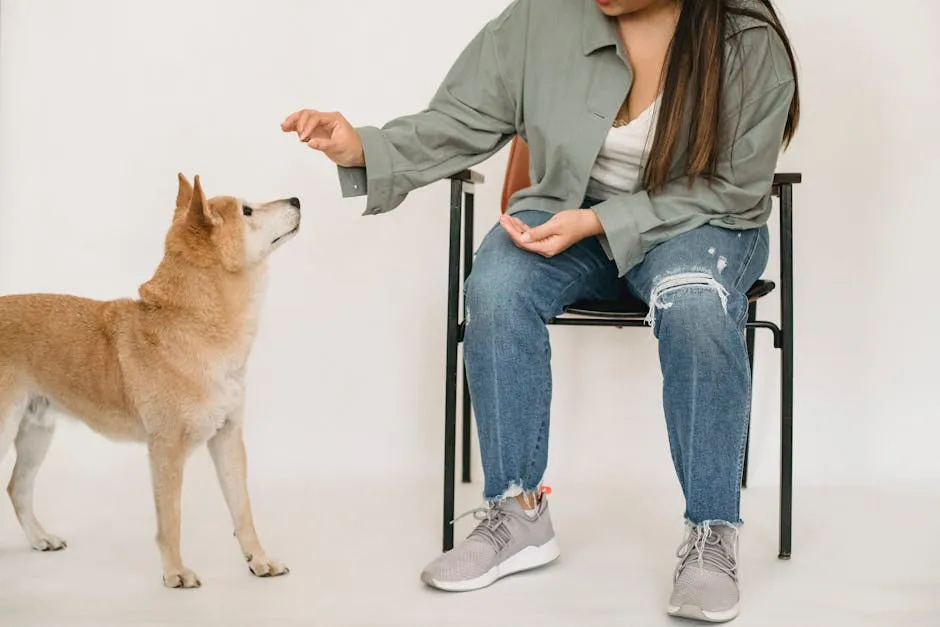
Long-Term Solutions for Separation Anxiety
Building Confidence in Your Dog
Boosting your dog’s confidence is key to managing separation anxiety. Start with obedience training. Teaching commands such as sit, stay, and come can create a strong bond and instill trust. This training not only reinforces your leadership but also provides mental stimulation.
Socialization is equally vital. Expose your dog to different environments, people, and other dogs. Positive experiences in new situations can help shape a well-rounded, confident pup. Consider puppy classes or dog parks—these are great places for social interaction.
Mental and physical stimulation play crucial roles in reducing anxiety. Regular exercise is a game changer. A tired dog is a happy dog! Schedule daily walks, play fetch, or even try agility training. Engage their minds with puzzle toys or scent games. Keeping your dog stimulated helps alleviate boredom, which can often exacerbate anxiety. To enhance their play, consider getting some Chuckit! Ultra Ball Dog Toy for some interactive fetch time!
Implementing these strategies can significantly boost your dog’s confidence, making them more secure when left alone.

Monitoring Progress and Adjusting Strategies
Tracking your dog’s behavior is essential in managing separation anxiety. Keep a journal of their actions when you leave and return. Take note of any changes in behavior or triggers that seem to contribute to their anxiety. This information can guide your training approach.
Be patient. Progress may be slow, and every dog is unique. Celebrate small victories, whether it’s a few minutes of calm or a successful solo stay. Positive reinforcement can go a long way. Offer treats or praise when your dog remains calm. To assist with training, consider using a Dog Training Clicker to help reinforce commands.
If certain techniques aren’t working, don’t hesitate to adjust your strategies. Perhaps a new toy or a different training method could make a difference. Consistency is critical, but flexibility in your approach will help you find what works best for your furry friend. Remember, the goal is to create a secure and happy environment for your dog, so celebrate the journey, no matter how long it takes.

FAQs
What are the signs of separation anxiety in dogs?
Recognizing separation anxiety is crucial for helping your furry friend. Some common signs include: Excessive vocalization: If your dog howls or barks like they’re auditioning for a musical, they may be feeling anxious. Destructive behavior: Chewing furniture, shoes, or even their favorite toys can indicate distress when left alone. Inappropriate elimination: Accidents inside the house, even if your dog is house-trained, can signal anxiety. Pacing or restlessness: If your pup seems to be on a non-stop treadmill, they might be struggling with anxiety. Scratching or digging: Dogs may scratch at doors or windows in an attempt to escape and find you. Excessive drooling or panting: If your dog looks like they’ve just run a marathon, they may be stressed. Each dog is unique, so pay attention to their behavior when you depart. If you notice several of these signs consistently, it’s time to take action.
Can separation anxiety be cured?
The good news is that separation anxiety can often be managed and significantly reduced. While it might not be possible to completely ‘cure’ every case, various strategies can help your dog feel more comfortable when alone. Gradual desensitization: This involves slowly increasing the time your dog is left alone, starting with just a few minutes. Think of it as their own little solo training session. Positive reinforcement: Reward your dog for calm behavior during your departures and arrivals. Treats can work wonders! Routine establishment: Dogs thrive on consistency. A predictable schedule can help your pup feel more secure, reducing anxiety over time. With patience, love, and consistency, many dogs can learn to cope with being alone. Your commitment will make a world of difference in their lives.
How long does it take for a dog to adjust to being alone?
Adjusting to being alone can vary widely from dog to dog. Generally, it might take anywhere from a few days to several months. Factors affecting this timeline include: The dog’s history: A rescue dog with a tough past may take longer to adjust. Personality differences: Some dogs are naturally more independent than others. Training consistency: Regular and consistent training helps speed up the adjustment process. Start with short absences and gradually increase the time. Celebrate each small victory, as they build your dog’s confidence and comfort level when left alone.
Is crate training effective for dogs with separation anxiety?
Crate training can be a double-edged sword for dogs with separation anxiety. Here are some pros and cons: Pros: Safe space: A crate can provide a cozy, secure environment where your dog feels safe. Prevents destructive behavior: When used appropriately, a crate can keep your dog from getting into trouble when you’re away. Cons: Increased anxiety: For some dogs, crating can exacerbate their anxiety. If they associate the crate with being left alone, it may lead to more distress. Not a long-term solution: Crates can help with short-term management, but they don’t address the underlying anxiety issues. Consider your dog’s personality and past experiences. If they seem to feel more anxious in a crate, focus on other strategies to help them adjust.
What should I do if my dog shows signs of distress when I leave?
If your dog shows signs of distress when you’re about to leave, here are some practical tips for immediate action and long-term strategy: Practice departures: Start by leaving for just a few minutes without making a big fuss. This helps them learn that you will return. Create positive associations: Give your dog a special treat or toy only when you leave. This gives them something to look forward to! Stay calm: Keep your goodbyes short and low-key. Don’t make a big deal out of leaving, as that can heighten anxiety. Desensitize to triggers: Practice picking up your keys or putting on shoes without leaving. This helps break the association between those actions and your departure. Seek professional help: If distress continues, consult a veterinarian or a certified dog trainer for tailored advice. Remember, patience is key. By implementing these strategies, you can help your dog feel more secure and comfortable when home alone.
Conclusion
As a new dog owner, managing separation anxiety in your rescue dog may feel overwhelming at times, but remember that with patience, consistency, and love, significant progress can be made. By understanding your dog’s needs, employing effective strategies, and, when necessary, seeking professional help, you can help your furry friend feel secure and happy when left alone.
Embrace the journey, and know that each step you take brings you closer to a harmonious and anxiety-free home, where both you and your dog can thrive. Your commitment to your dog’s well-being will create the foundation for a trusting relationship, making every moment together more enjoyable. After all, a well-adjusted dog means a happier, more peaceful household. And if you’re ever on the go, don’t forget to check out the Travel Dog Water Bottle for hydration on the go!
Please let us know what you think about our content by leaving a comment down below!
Thank you for reading till here 🙂
All images from Pexels





